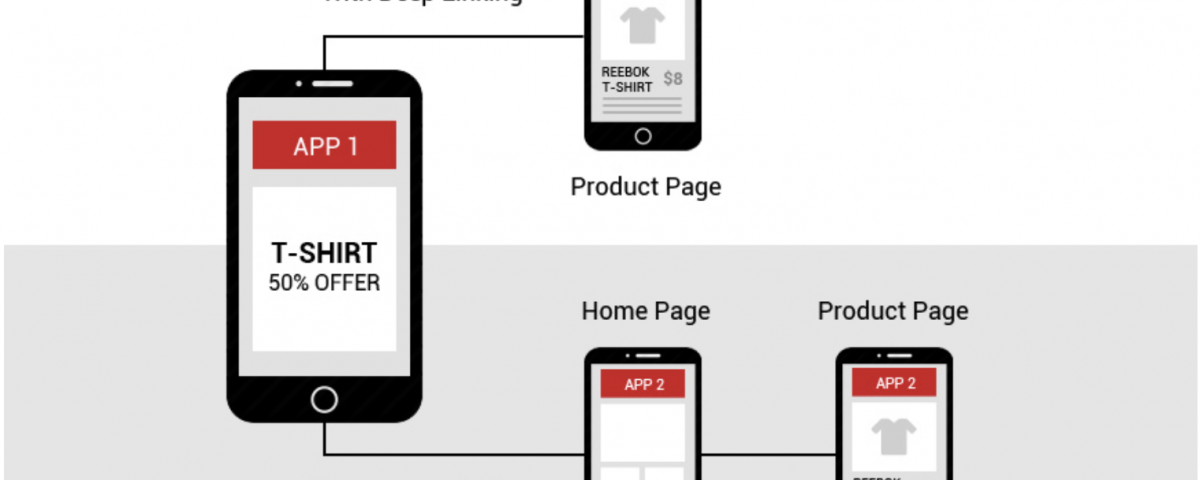
What Is The Latest Drupal Version And Its Advantages?
22nd March 2021
CSS tricks to shake up your web layouts
26th March 2021What is deep linking?
Deep links are a type of link that send users directly to an app instead of a website or a store. They are used to send users straight to specific in-app locations, saving users the time and energy locating a particular page themselves – significantly improving the user experience.
Deep linking does this by specifying a custom URL scheme (iOS Universal Links) or an intent URL (on Android devices) that opens your app if it’s already installed. Deep links can also be set to direct users to specific events or pages, which could tie into campaigns that you may want to run.
Why are deep links important?
Deep links produce a seamless user journey that reduces churn and increases the likelihood of an install. They let you make sophisticated campaigns while providing a better user experience, moving users onto your app in a single click.
Deep links also create the opportunity for easier incentivization. It’s simple to persuade people to try a new experience when a potential prize or offer is sent to them via a retargeting campaign. For example, let’s say you have a music app and want to promote a new album, so you allocate budget to be spent on a popular website. However, you want the user to listen to the sample in-app, not just on the website (where they are only exposed to the album cover). Here you need a deep link to send them directly to the correct page in your app, offering a seamless user experience.
In-app deep linking can significantly increase your conversion rate and retention rate. Deep linking campaigns can be tracked, and provide extra data points on how your campaign performs. If you’d like to learn more about this, you can read up on the effects of deep linking in campaigns here.
What are deferred deep links?
Deep links are a smart way to drive conversions while offering a positive user experience, but what happens if the user is deep linked into an app they don’t have installed? This is when deferred deep links come in to play.
If a user clicks on a deep link and doesn’t have the app installed, they can be deferred to the App Store instead. The genius of deferred deep linking is that when that user installs and opens up the app, they can still be sent to the in-app location where you initially wanted them to land. For example, this could be a specific level in your gaming app, or a page from your product catalog for e-commerce.
Deep linking and Adjust
Deep linking may seem like a challenge, but Adjust can help take care of them. You can create deep links, deploy them, and track the results in our dashboard, an additional but essential feature.
Adjust Deeplink Generator
Adjust made the Deeplink Generator with usability in mind, allowing you to create a deep link without any extra effort. The Deeplink Generator provides marketers with fully-formed deep link URLs that work for both App Links (Android) and Universal Links (iOS), greatly reducing the hassle of implementing deep links yourself.
To use the tool, log in to your Adjust dashboard and open the Menu, where you’ll see the ‘Deeplink Generator’ as an option. Click to open, and you’ll find a page to input the information required to create your deep link. Then simply copy and paste into whichever campaign you’ve set up.
Have more questions on deep linking? We can help with our full deep linking guide, which covers the process and best practices. You can also read more about deep links with our official documentation, which shares detailed technical information on how our deep links work.
Key Takeaways
- A link is just a digital address. An address is to a map as a link is to the internet.
- A link is a URL. A URL is a type of URI. These things have fancy names, but at their core serve the same purpose and mean similar things.
- A URL is made up of a “Scheme” and a “Resource Name.” The “Resource Name” has four important components:
- Subdomain
- Domain
- Top Level Domain
- Path
- Deep links are very specific URLs, just like specific websites or physical addresses.
How does deep linking work?
Deep linking works by mapping out every screen of the app in a similar manner to a website. This means that every individual webpage has its subsequent screen in the app, so customers can transition easily from web browsing into the app. For example, if a user searches for a product on a mobile search engine and already has the app installed on their phone, clicking a link will take them directly to that specific product in the app. By removing a step from the transaction process, deep linking helps to maintain user attention and improve conversion rates.
Deep linking is not restricted to mobile websites alone; it can also be used in push notifications and email marketing. This adds value to the notification by providing the user with relevant content and increases conversion rates.
Why is deep linking important?
The value of deep links come down to their impact on user experience. Deep linking makes the customer journey feel seamless by allowing users to move from website to app, or between two separate apps, in one click. Not only does this expedited process reduce the churn rate, but it also increases conversions as users can be directed to the exact page they need to be on to convert.





